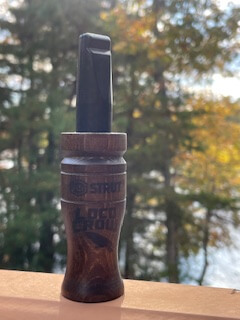
“Death and life are in the power of the tongue.” ~Proverbs 18:21
Pictured above is a crow call; it is a Hunters Specialties Strut Loco crow call that I bought because it has a wood barrel, and wood-barreled hunting calls tend to produce soft, warm, realistic tones – as opposed to acrylic and polycarbonate calls that are piercingly loud and harsh.
There is a place for both, but I find realism, not volume, is critical when you want crows to answer you.
Imagine my (albeit minor) dismay, then, when I opened the call, blew it, and the tones were a bit too high-pitched for my tastes.
It was nothing that couldn’t be rectified, but if I noticed, the crows would too. It’s also a common problem with crow calls; they ship from the factory a little high pitched. I like a deeper, raspier crow call that I think is more realistic.
Anyway, this is an easy fix. All you need to know how to do is tune the call.
Some mouth calls are more complex than others. For instance, many duck calls have not just a mouthpiece and a barrel, but two reeds, a wedge, and a soundboard.
For our purposes, we’ll be looking at a call that has an insert or mouthpiece (which in this case is two parts) a barrel, and just one reed. Tuning one of these calls is a lot easier than you might think. Here’s what you need to know.
Take the Call Apart
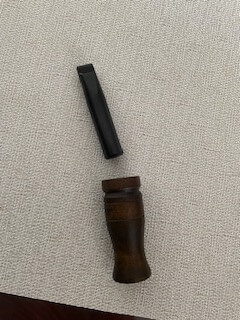
The first thing you need to be able to do to tune a hunting call is separate the mouthpiece from the barrel. It’s good to know that you can do this not just because it is necessary to tune the call, but because after use, you should separate your calls to let them dry out, too. All that spit in there is not good for the call, especially since this one has a wood barrel.
Some calls are a little harder to get apart than others, but it’s worth it to figure it out. This call in question was pretty sticky; I used a wooden dowel of appropriate diameter to get the mouthpiece unstuck so I could remove it.
Once you have the call apart, it will look like this:
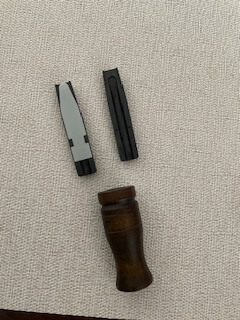
As I stated, this call’s mouthpiece is two pieces, so what you’ll have are the barrel, the top and bottom half of the mouthpiece, and the reed, which is the white part.
Reposition the Reed
Take a closer look at the way the reed sits in the mouthpiece:
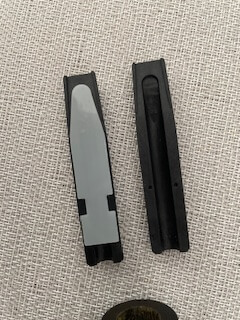
The lower the reed is in the mouthpiece, that is, the farther away it is from the opening of the mouthpiece, the higher the pitch of the call will be.
The image above shows the reed positioned for the highest possible pitch.
The higher the reed is, that is, the closer the end of the reed is towards the opening of the mouthpiece, the lower the pitch will be.
By contrast, the image below shows the reed positioned for the lowest possible pitch.
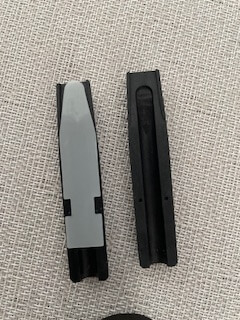
I like my crow calls to be deeper in pitch and as raspy as possible. Therefore, I want my reed positioned as indicated in the second picture, above.
Once you have the reed positioned as you desire, put the two halves of the mouthpiece back together (taking care not to dislodge the reed from its position), and reassemble the call.
Put the Call Back Together
With the reed repositioned and the two halves of the mouthpiece clamped together, press the mouthpiece back into the barrel, then push it down until it is fit snugly in place.
That’s All There Is to It
This basic overview tells you just about everything you need to know about how to tune a hunting call, at least this sort of call. Tuning a duck call with a wedge or a double-reeded call is a little more complex but it still follows this basic protocol.
One other note for you: after you take your calls in the field and blow them, you should take them apart when you get home so that they will dry out. This will help extend the life of your calls.
Also, I recognize that there are other types of calls that are not mouth calls, such as turkey pot calls. These calls needed to be “tuned” too, but it is called conditioning. You can adjust the grit of the surface of the call to impact its acoustic properties. For more information on conditioning a turkey pot call, see my previous post.
Be safe.
~The Eclectic Outfitter